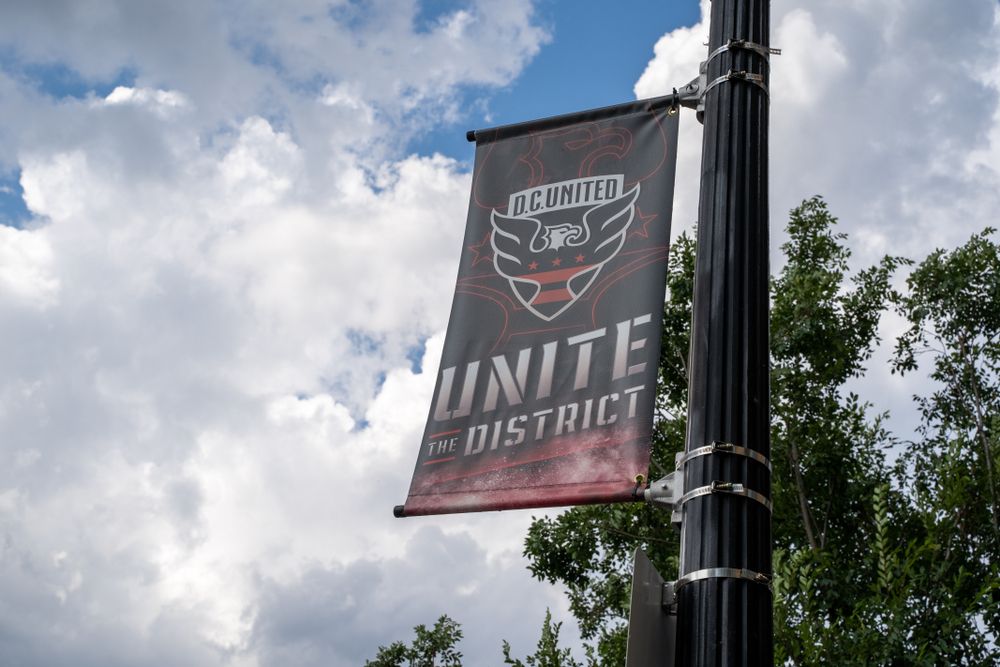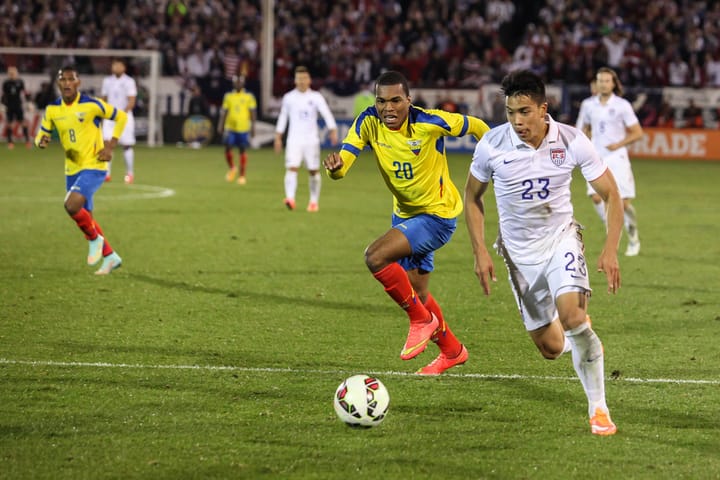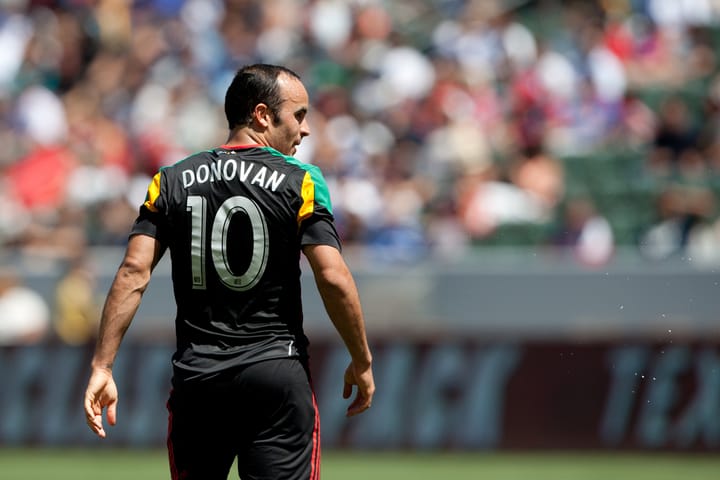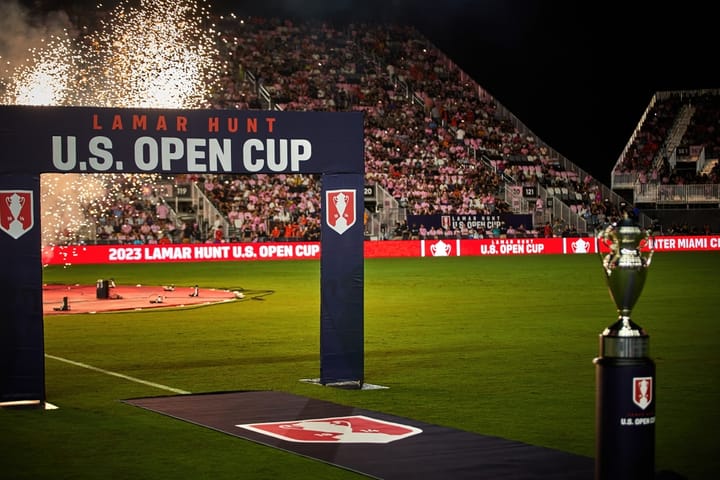Kickstarting History: The Inaugural 1996 MLS Season and Its Legacy
Major League Soccer has grown into one of the ten most important soccer leagues in the world. In this article we look back at its first season, 1996.

The 1996 Major League Soccer (MLS) season marked the beginning of a new era in American soccer. With its inaugural campaign, MLS aimed to establish a professional soccer league that would captivate fans across the country. In this article, we delve into the intriguing journey of the 1996 MLS season, exploring the preparations, the challenges faced, the teams and players involved, and the overall impact it had on the development of soccer in the United States.
Preparation for the Inaugural Season
Major League Soccer (MLS) started its inaugural season in 1996, marking the return of top-tier professional soccer in the U.S. since the North American Soccer League (NASL) folded in 1984. The road to the first MLS season was paved with numerous challenges and obstacles. Originally slated to begin in 1995, the league faced delays that pushed the launch to 1996. Despite these setbacks, MLS forged ahead with preparations, signing marquee players to generate excitement and anticipation. The signing of Tab Ramos on January 3, 1995, marked the beginning of a series of player acquisitions that would shape the league's debut season.
The 1996 season began with 10 teams:
1. Colorado Rapids
2. Columbus Crew
3. D.C. United
4. Dallas Burn (now known as FC Dallas)
5. Kansas City Wiz (later renamed Sporting Kansas City)
6. Los Angeles Galaxy
7. New England Revolution
8. New York/New Jersey MetroStars (now New York Red Bulls)
9. San Jose Clash (later San Jose Earthquakes)
10. Tampa Bay Mutiny (disbanded in 2001)
To allocate players to the ten teams participating in the inaugural season, the league implemented the MLS Inaugural Allocations in October 1995. Each team received a combination of national team players and foreign talents. With the players allocated, the league invited approximately 250 players to a tryout on the campus of UC Irvine in January 1996.
In February of that year, the 1996 MLS Inaugural Player Draft took place, allowing each team to select players over sixteen rounds. The Columbus Crew held the first pick and chose Brian McBride, setting the tone for the draft. The league then proceeded with the 1996 MLS College Draft and the 1996 MLS Supplemental Draft later that day, providing additional opportunities for teams to acquire talent.
Preseason Preparations and Roster Restrictions
As the start of the season approached, teams entered the preseason phase in early March. During this period, teams had to reduce their rosters to twenty-two players by March 25 and further trim them to eighteen by April 15. Each team operated under a $1.2 million salary cap, with no player allowed to earn more than $192,500. To promote American players, teams were limited to a maximum of five foreign players on their rosters.
Several notable players were part of the league during its first season, including:
Carlos Valderrama (Tampa Bay Mutiny) – Known for his incredible passing ability and iconic blonde afro Valderrama, from Colombia, was one of the league's first marquee signings.
Marco Etcheverry (D.C. United) – A playmaking midfielder from Bolivia, Etcheverry played a pivotal role for D.C. United in their early years.
Eric Wynalda (San Jose Clash) – Scored the first-ever goal in MLS history and was a key figure for the U.S. Men's National Team.
Raúl Díaz Arce (D.C. United) – A prolific striker for D.C. United during the initial seasons.
Cobi Jones (Los Angeles Galaxy) – One of the most recognizable faces in U.S. soccer, having played in multiple World Cups for the U.S. Men's National Team.
The Season Unfolds: Excitement and Challenges
On April 6, 1996, the San Jose Clash hosted D.C. United at Spartan Stadium in the first-ever MLS match. The clash was broadcast live on ESPN, and the home team emerged victorious with a late goal by Eric Wynalda, etching his name in MLS history. The goal itself was later selected as the Goal of the Year, highlighting the quality and excitement that the league aimed to bring to American soccer.
The regular season consisted of each of the ten MLS teams playing 32 games. A win in regulation time earned three points, while a shootout win awarded one point. In an effort to avoid ties and appeal to the American audience, MLS had a unique "shootout" system in its early years instead of the traditional penalty shootout seen worldwide. This involved players starting 35 yards from the goal and dribbling toward the goalkeeper, attempting to score within five seconds.
Another quirk of the early MLS days was the game clock counting down from 45 minutes (like basketball or hockey) instead of counting up to 45 minutes, which is the global standard. This was eventually changed to align with international norms.
The teams were divided into two conferences, Eastern and Western, to ensure balanced competition throughout the season. This division allowed for intense rivalries and strategic matchups to develop, further fueling the excitement surrounding the league.
The Tampa Bay Mutiny won the first Supporters Shield and qualified for the MLS Club Playoffs along with seven other teams. The only two teams that didn’t qualify for the Playoffs were the New England Revolution and the Colorado Rapids.
The Western Conference Finals were won by the Los Angeles Galaxy after they beat the Kansas City Wiz, while D.C. United beat the Tampa Bay Mutiny in the Eastern Conference Finals.
On a rain-soaked pitch in the Foxboro Stadium, D.C. United won the first-ever MLS Cup. They defeated the Los Angeles Galaxy 3-2 in extra time. It was a memorable match, with D.C. United coming back from a 2-0 deficit to win. Marco Etcheverry and Jaime Moreno played significant roles in this turnaround, with Moreno scoring a goal and Etcheverry delivering the crucial corner kick for the game-tying goal.
The Teams and Their Journey
The ten teams that participated in the inaugural MLS season each had their own distinct characteristics as they built their rosters and prepared for the challenges ahead. Let's take a closer look at some of the teams and their notable players:
D.C. United: The Pioneers
D.C. United, one of the league's flagship teams, entered the season with a strong roster, including players like John Harkes and Marco Etcheverry. Harkes, the team's captain and a prominent figure in American soccer, brought leadership and experience to the squad. Etcheverry, a Bolivian playmaker known for his mercurial style and distinctive mullet haircut, showcased his exceptional skills and creativity on the field.
NY/NJ MetroStars: Building Momentum
The NY/NJ MetroStars, led by coach Eddie Firmani, aimed to make an impact in their inaugural season. The team featured talented players like Tab Ramos, who had already made a name for himself on the national team, and Tony Meola, a highly regarded goalkeeper. With their experience and skill, the MetroStars sought to establish themselves as formidable contenders.
Tampa Bay Mutiny: The Sunshine State's Team
The Tampa Bay Mutiny, under the guidance of coach Thomas Rongen, boasted a strong attacking force centered around the influential player known as "Pibe" Valderrama. Pibe, a Colombian midfielder with exceptional vision and passing ability, became a defining figure for the Mutiny. Accompanied by Frankie Hejduk and Steve Ralston, the team displayed an entertaining style of play that captivated fans.
Columbus Crew: Building on a Solid Foundation
The Columbus Crew, under the direction of coach Timo Liekoski, sought to make a name for themselves in their inaugural campaign. The team featured players like Brian McBride, the first pick in the draft, who showcased his goal-scoring prowess. The Crew's solid foundation allowed them to compete with determination and resilience.
New England Revolution: Seeking Success
The New England Revolution, under coach Frank Stapleton, entered the season with the goal of achieving success on the field. The team relied on players like Alexi Lalas, a charismatic defender known for his long red hair and passionate style of play. Lalas, along with other talented individuals, formed a cohesive unit determined to make their mark in the league.
The Impact and Legacy of the 1996 MLS Season
The inaugural MLS season laid the foundation for the growth and development of soccer in the United States. It provided a platform for talented players to showcase their skills, ignited rivalries between teams, and captured the attention of fans across the country. The league's innovative approach, including the introduction of shootouts and countdown clocks, added excitement and uniqueness to the matches.
The success of the 1996 season set the stage for the continued expansion and evolution of MLS. The league's commitment to developing American players and attracting international talent helped raise the level of play and enhance the overall quality of soccer in the United States. From its humble beginnings, MLS has grown into a prominent league that attracts top players from around the world.




